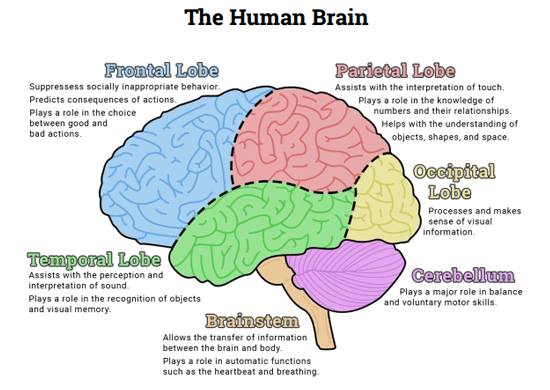
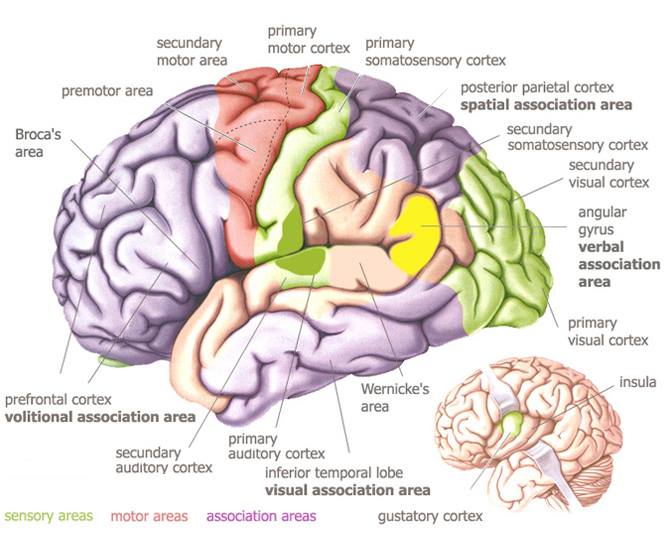
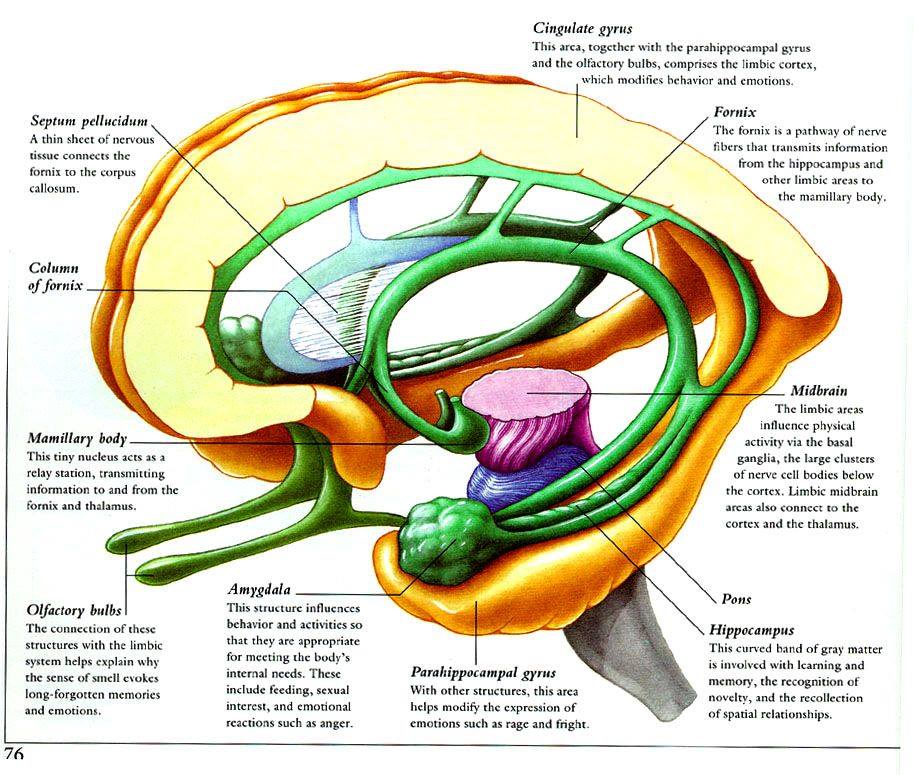
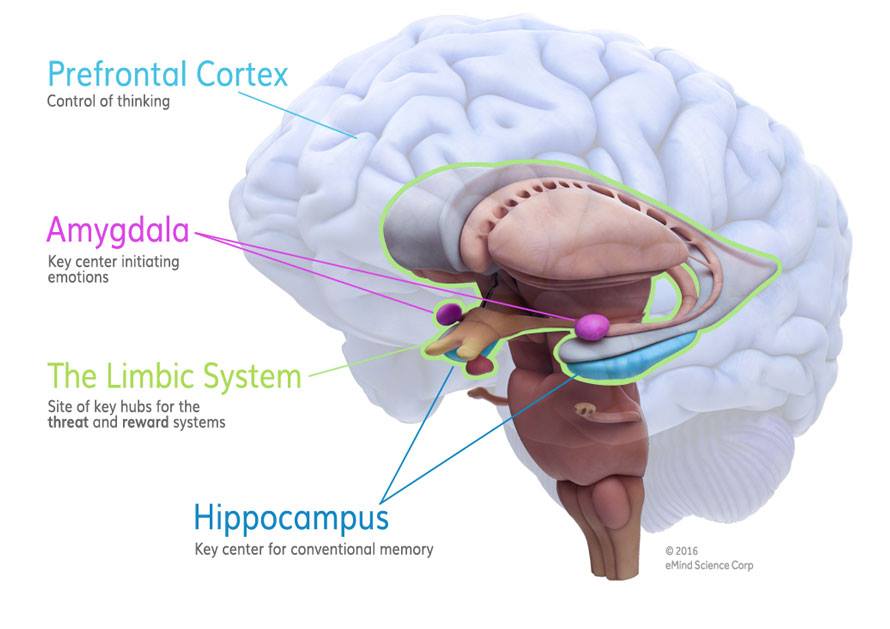
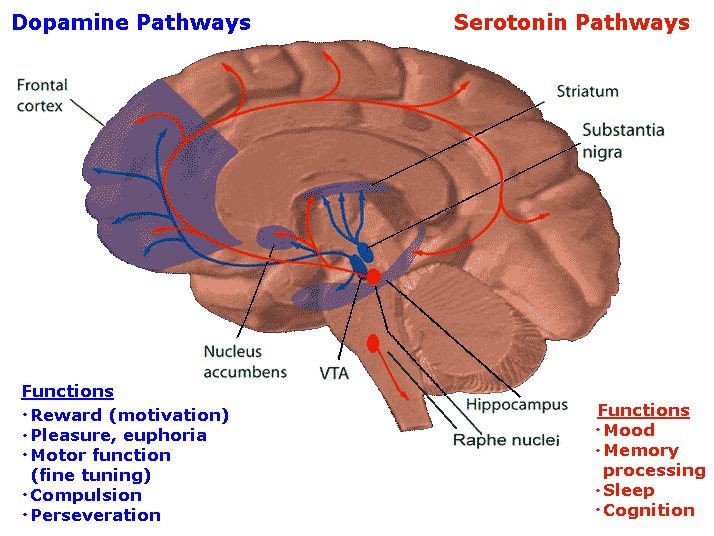
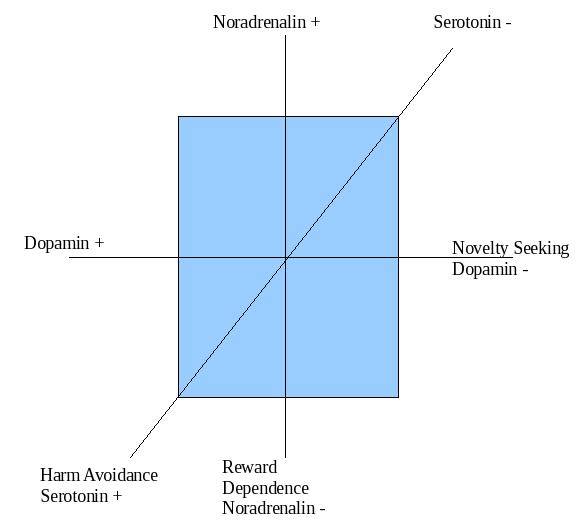
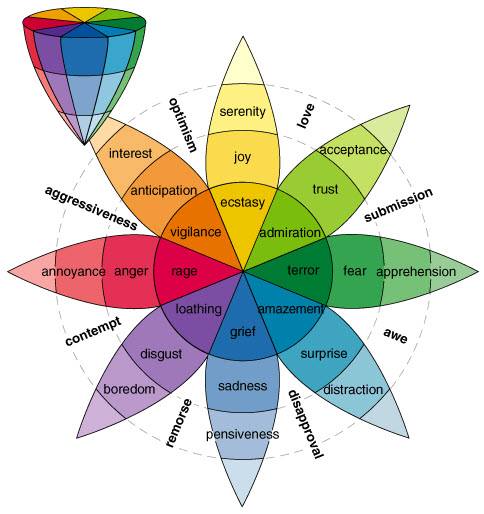
COMPARISON OF DIMENSIONAL MODELS OF PERSONALITY – AND POSSIBLE BIOLOGICAL BASIS
Now, as someone lower on the spectrum, I can appreciate the sort of madness of those higher on the spectrum than I am by seeing through the madness to the insight. This guy reminds me a lot of Chris Langan. Both of whom correctly intuit an abstract pattern of constant relations but who leap from a logical to a physical relationship. (and both of whom claim scientific proof of the existence of god. sigh…. )
However, whether the physicality is true or not (i think in the abstract it’s useful for the purpose of investigation) I think he’s correct on the dimensions of personality and their relations to brain structure. Just how those structures cooperate is far more complex (I assume.)
—– Crazy Autistic Prose Follows —–
THE CARTESIAN THEORY: Unification of Eysenck and Gray GEORGE HAMMOND Note: This paper was published in 1994 in New Ideas In Psychology Vol. 12(2), pp. 153-167, Pergamon Press
Abstract- This paper advances a new and comprehensive theory of the biological basis of the Structural Model of Personality. The Cartesian geometry of the brain is proposed as the origin of the Structural Model. Eysenck’s personality model is identified with the Cartesian structure of the brain. A decussation in the Papez loop serves to unite Gray’s personality model with Eysenck’s model providing strong experimental support. The theory explains the Big-5 model in psychometry which is cited as a direct empirical confirmation. The Cartesian Theory advances that the Structural Model of Personality, contrary to prevailing opinion, is an axiomatic “hard science” structure.
I. INTRODUCTION: A PRIMER IN THEORETICAl PHYSICS FOR PSYCHOLOGIST
The author is a theoretical physicist although he has spent a decade working in psychology. For this reason it is necessary to bridge the interdisciplinary gap between physics and psychology by explaining what is meant by “Cartesian Theory”, why it is “axiomatic”, and to explain the novel idea that psychometric structure should be identical to brain structure as this theory proposes.
In physics the word “Cartesian” means, and only means, an “orthogonal three-axis structure”. The name derives from DesCartes’ mathematical studies. DesCartes is also the author of numerous philosophical tracts, but those works do not relate to this discussion. Cartesian structure is unique in that it is found that real space is Cartesian, the first axiom of classical physics. The Cartesian structure of space causes the common rectangular shape of objects to be the most prevalent structure in science. The bonding orbitals of the atoms themselves are Cartesian which imparts a Cartesian structural influence on all material substance. The Cartesian structure of space imposes a physical law that all mechanical systems have three degrees of freedom, which explains the shape of a house, a car, an airplane; it is the first principle of all zoological formation and axiomatically predetermines the anatomy of man.
The human body is a three-axis Cartesian structure (Fig. 1a). In the CNS Figure 1,a,b,c,d,e,f,g the spinal cord is the first axis (neuraxis), and the Medial and Central fissures the second and third axes; the latter two yielding a primary four-lobed brain geometry. This basic Cartesian geometry is derived from the first three (Cartesian) cleavages of the egg in embryology (Fig. 1b).
Of interest here is that each of these Cartesian axes exhibits a major functional neurological differentiation, one on each axis; namely, the Triune neuraxial formation (stem-limbic-cortex), the Bell-Magendie, and the Sperrian. This three-axis differentiation could produce three independent psychometric factors. thus we have at the outset, an axiomatic Cartesian neurological structure associated with possibly three independent psychometric factors.
It happens that the reverse situation already exists in personality theory. Eysenck’s three uncorrelated psychometric factors may be visually represented by a Cartesian geometric structure (Cartesian coordinates). This simply because the location of a point in space is taken to be the standard example of three independent variables thus it is that we have psychometric geometry linked to brain geometry.
Now, we may also derive a further structural result from this. If the four main lobes of the brain (L-R motor and sensory) are the seat of four contrasting personalities, we see that the contrast between the diagonally situated lobes represents an extremum. We therefore predict personality conflict to be a diagonally organized neurological process. This indeed turns out to be the origin of Gray’s neurologically based personality theory.
Gray’s theory is a neurological connecting structure that links directly the diagonally situated lobes of the brain, and causes, in addition to Eysenck’s three “normal” psychometric axes, a set of “diagonal” psychometric axes of personality conflict (personality syndromes), once again geometrically identical with their causal brain structure (Fig. 4). This constitutes of course, a powerful experimental confirmation of the Cartesian theory of the brain. Finally, it turns out that Eysenck’s three dimensions of P,E,N, and Gray’s two dimensions of AnxD and ImpD, are none other than the five factors of the celebrated Big-5 Model in personality psychometry, yielding a unitary psychometric confirmation of the theory.
While the established facts are clearly sufficient to advance that the Cartesian Theory is “axiomatic”, there are some who will wonder about the ultimate biological chain of causality. In this regard I will here present an illuminating heuristic argument. We may presume that in the primitive brain one of the first logical operations was coordination of the machine in space. This is a Cartesian operation (cf., pitch, roll, and yaw) and we might assume that the organism simply utilized the isomorphic structural relation of its brain to the surrounding Cartesian space to effect this. The R-brain controlled R-turns, the L-brain L-turns, the front brain down turns, etc. Data relating head and eye steering movements (LEMS) with Sperrian lateralization are likely evidence of this. As the primitive brain evolved into the complex that it is today, mechanical navigation became logical navigation and finally psychological navigation so that today the four lobes of the brain are the location of four “personalities” of man. Personality structure and indeed personality conflict, has simply evolved from man’s primitive mechanical steering system.
Now, a speculation such as this is, of course, absolutely unessential for the present theory and I include it only as an interesting heuristic argument which is more or less representative of a large class of circumstantial data of this kind.
Having now established a bridge between the fundamental structural principles of classical physics and those of personality structure, we turn to a necessarily faster paced and more formal exposition of the Cartesian Theory. it is to be remarked here that what follows is an extremely summary treatment of the theory; little more than a theoretical note announcing its discovery. Hopefully a detailed exposition will be possible later on. I am indebted to New Ideas in Psychology for undertaking the publication of an unusual scientific work and particularly to two of their reviewers who first raised the issue of the 5-Factor theory. Had they not done so that significant development might still lay uncovered.
II. The Cartesian Theory of Anatomy
This theory is based on the authors observation that all vertebrate animals possess Cartesian symmetry. In the embryo this is marked by the neuraxis, the bilateral symmetry, and the sulcus limitans (dorso-ventral symmetry line, D-V), the latter separating the motor and sensory plates in the embryo. The work of Roux (1888), Driesch, Spemann, Schmidt, and others early in this century established that macroscopic anatomical geometry is derived from the simple Cartesian cleavage of the egg (Fig. 1b). This Cartesian geometry of mitosis and embryology then is the origin of the Cartesian symmetry of the brain, evidenced in the intersection of the neuraxis, the Medial fissure, and the Central (Rolandic) fissures of the brain- the three Cartesian axes of the brain.
The entire body is a Cartesian construct. The core of this structure is the spine which is three-axis symmetric. The skeleton is a Cartesian structure, including the quadrupedal locomotion system of all higher animals. All of the fundamental systems of the body are Cartesian: The vestibular system, the oculomotor system, the visual cortex as evidenced by quadrantanopia, the quadrature of the circulatory system, the cerebellum, the primary musculature, the Cartesian symmetry of the teeth, the sutures of the skull (bregmatic fontanel), etc. (Fig. 1).
Historically, the first of the three Cartesian divisions of the brain to be identified by neurophysiologists was the Bell-Magendie dichotomy situated astride the Central fissure. Over 100 years later it fell to Roger Sperry to identify the neuropsychological function of the second axis, the celebrated L-R axis. Despite the fact that it is the oldest known structure in the brain, the attachment of a neuropsychological label to the neuraxis itself has been slow in developing and perhaps the best-known terminology and most comprehensive theory of this structure is Paul MacLean’s Triune Brain (MacLean, 1973) (Fig. 2). Armed with these well-documented theses we turn now to the field of psychology to search for the possible psychological correlates of this Cartesian neurophysiological structure.
III. The Eysenckian Personality Model
The oldest theory of personality is that of the Four Humors advanced by Hippocrates 25 centuries ago and Eysenck has stressed the relation of this historical model to his empirical result (Eysenck & Eysenck, 1969, p. 13). A general convergence of current research trends towards this result has recently been advanced by Merenda (1987). Implicit in the Cartesian Theory of course, is that these four historical personalities now find a scientific basis in the four lobes of the brain. Moreover, Freud’s celebrated Structural Model consisting of the Ego, SrEgo, Id, and Libido is identified by the present author with this result (Fig. 6).
Eysenck’s empirical personality model (Eysenck 1947, 1952, 1970, 1976, 1981, 1990, 1992b) is one of the most cited theories in contemporary personality literature and is, arguably, the leading theory in the field. The model consisting of three psychometric dimensions named Extraversion, Neuroticism, and Psychoticism (E,N,P) is well known as a three-axis orthogonal theory. Eysenck (1967) has also advanced a biological model identifying the neurological basis of the psychometric result.
Eysenck’s theory is immediately reconciled with the Cartesian Theory by identifying E,N,P with the three Cartesian axes of the brain outlined in Section II (Fig. 2). Fig 2 A large literature on lateralization of emotion (Silberman & Weingartner, 1986) indicates that the +N, -N spectrum (positive vs. negative emotion) is identified with Sperrian lateralization. Extraversion is identified with the Bell-Magendie dichotomy, support for this coming from Brebner (1983), Brebner and Cooper (1974,1978), and Stelmack (Stelmack & Plouffe, 1983). Stelmack has indicated that “the case can be made” that E is associated with the Bell-Magendie dichotomy itself.
Psychoticism is identified with the remaining Cartesian axis (the neuraxis). Both Claridge (1981a) and Gray (1981, p. 272) have suggested a vertical neurological integration as the basis of P and this fits with my own opinion that it represents a vertical pathology along the axis of MacLean’s Triune Brain.
Eysenck’s neurological model is also reconciled with the Cartesian structure of the brain. His model identifies E with cortical arousal and N with Limbic activation (Eysenck, 1967). Eysenck recently states “the theory linking Arousal with the E dimension is relatively novel, whereas that linking N and the limbic system has a long history” (Eysenck, 1990, p. 249). While the Cartesian theory indicates simply lateralization of the limbic system for N, it now explains the “novel” identification of cortical arousal with E. the Bell-Magendie dichotomy is most visible in the cortex (the motor-sensory strip) which would lead to an identification of E with cortical function. It is also interesting to note that the neuraxial modulation via the ARAS, the third element of this model, might be related to P.
Summing up then, Eysenck’s well established E and N dimensions are clearly correlated neurophysiological, according to contemporary data, with the first two Cartesian axes of the brain. Of particular note is that the obvious criticism of Eysenck’s theory for not including Sperrian lateralization (Powell, 1981, p. 69) has been handily solved in the process. The support for P is still largely a case of identification by default, but not entirely by any means, and this is attributed largely to the fact that it is a relatively recent development in Eysenckian theory and still undergoing development (Claridge, 1981b; Eysenck, 1990, 1992b).
IV. Eysenck’s Quadrature in Social Attitudes
Historically, Hans Eysenck’s personality model is derived from his research in social psychology, particularly his two-axis model of social attitudes (Eysenck, 1944). He proposed and has subsequently established (Eysenck, 1951, 1954, 1975; Eysenck & Wilson, 1978) that there is a second axis (T), orthogonal to the well-known Left-Right political axis (R),in social attitudes.
Despite Eysenck’s insistence that the primary mooring in social attitudes must be the historical L-R axis, there is the undeniable appearance of a diagonal theory, rotated 45 degrees from his model. Adorno’s theory is a famous example of this (Adorno, Frenkel-Brunswick, Levinson & Sanford, 1950). This theory consists of a single diagonal dimension (Eysenck & Wilson, 1978, p. 4; Ray, 1986, p. 157) which I shall call the “left diagonal”. Both diagonals make an appearance in Ferguson’s (1939, 1973) well-known result; discussed at length by Eysenck (Eysenck, 1954, 1971; Eysenck & Wilson, 1978). A summary of this normal vs. diagonal controversy is given by Brand (1981, p. 22) who points out that this same peculiarity appears in personality psychometry as well as in social attitudes.
As a matter that might shed some intuitive light on the relation of “normal” to “diagonal” structure, I will mention my belief that Eysenck’s model is the origin of the Bicameral/Two-Party System (BI/2P), and that my analysis of the Roll Call voting record in the U.S. Congress has detected the existence of a diagonal “X” pattern in the voting statistics. This suggests that while social structure is normal, social conflict is diagonal, as it were.
Now, an axiomatic Cartesian theory, if proven true, would manifestly indicate that Eysenck’s social attitude model cannot be anything other than a direct social manifestation of his personality model. This indicates the existence of a third axis, likewise, in social attitudes. Eysenck has successively tried to show that the personality dimensions E, and then P, underlies the social dimension T (Ray, 1986, pp. 167-168). The existence of a third axis then, would indicate that they both probably do and that the P component of T is actually the third axis, while the E component is probably then, his time honored second axis. this would complete the suspected identity, indicated by the Cartesian theory, between the Structural Model of Personality and the structure of social attitudes.
The established existence however, of a diagonal structure in both social attitudes and personality theory has been introduced here specifically for the purpose of providing a general backdrop for the introduction of Jeffrey A. Gray’s diagonal personality model. In the next section it is then demonstrated how the Cartesian Theory of the brain unifies his diagonal model with Eysenck’s model, thus yielding a powerful experimental confirmation of the correctness of the Cartesian Theory itself, which serves to unite them.
V. The Unification of Eysenck and Gray
Gray’s personality model (Gray, 1970, 1972, 1981, 1982, 1987a, 1987b, 1987c, 1988, 1991a, 1991b, 1991c) is referred to as an alternative to Eysenck’s theory, the difference being a 45 degree rotation from Eysenck’s model. Gray’s theory is based on two decades of experimental research on Anxiety with a recent, and by comparison, rather tentative proposal concerning the origin of Impulsivity (Gray, 1991a, 1991b, 1991c). The thrust of Gray’s research however, is that his diagonal theory represents a structure that is closer to biological causation than Eysenck’s theory. Gray states: “A number of arguments suggest that the axes labelled ‘anxiety’ and ‘impulsivity’…have a better claim to…biologically real lines of causation than any other…including the original rotation used by Eysenck” (Gray, 1987a, p. 352). On the other hand we have Eysenck’s opinion of Gray’s theory: “Interesting and important as Gray’s contributions have been on the physiological side…correlational studies suggest that the picture Gray gives is essentially wrong…on the whole it would seem more appropriate to relate (his biological theory) to (Introversion) rather in line with my own earlier theories” (Eysenck, 1990, p. 248). Judging from this, at both the biological and psychometric levels, a normal and diagonal model are well entrenched in the literature and in fundamental disagreement. As a further disturbing observation, it is noted that neither of these established theories deals with the now immense topic of Sperrian lateralization (Powell, 1981, p. 69). It is at this point that the Cartesian Theory happens on its first major success. Gray’s theory is seen as the neurological structure that controls interaction and conflict, diagonally, between the four principle lobes (L-R motor and sensory) of the brain, which underlie Eysenck’s model (Fig. 4). Figure 4 Now, Eysenck has shown that the distribution of E and N is isotropic and normally distributed (Burt, 1941, p. 438; eysenck, 1947, pp. 50 and 59) (Fig. 3b); while Gray advances that “Anxiety” is a sum of E and N (Gray, 1970). Taking Anxiety = |E|+|N| we have a polar diagram of personality strength (Fig. 3c). Fig 3
From the quadrupole distribution of this figure, we see how a diagonal conflict structure arises from eysenck’s normal dimensions of E and N. Conflict is implicated, both from the bipolar structure of the dimensions and from the classic social Left-Right conflict which exists on the horizontal axis. Moreover, at the biological level, we now have a four-lobed brain structure which is suggestive in itself of a diagonal neuropsychological extremum. All of this suggests that Gray’s model must consist of a diagonal neurological link connecting the diagonally opposed lobes, or personalities, of the brain. Gray’s biological model consists of the septohippocampal system (SHS) controlling Anxiety, a behavioral activation system (BAS) underlying Impulsivity and a Fight/Flight system yielding a new third dimension, suggested by Gray as possibly Eysenck’s P (Gray, 1987a, 1991a, 1991b, 1991c). Here I will simply state that the Cartesian Theory indicates that any dimensions normal to the E-N plane has to correlate with Eysenck’s P whether controlled by a Fight/Flight or some other neurological system. Regarding the BAS, the Cartesian Theory indicates that there is a far more fundamental neurophysiological origin of Impulsivity than “goal oriented motor programming” (BAS) as recently advanced by Gray (1991a, 1991b, 1991c). In fact, it is a decussation in the SHS that indicates that it is the SHS once again, which Gray has spent 20 years developing, that not only controls Anxiety, but in a diagonally symmetric mode of operation, actually controls both Anxiety and Impulsivity.
The SHS (Gray, 1991a, p. 275) (Fig. 5) consists of a comparator located in the hippocampus. this compares periodically the real world of sensory input to a predicted or expected world generated by sensory input traversing the Papez circuit. If the comparator detects a significant deviation from expected events it activates a neurophysiological state of Anxiety as a reactive mechanism. the theory is well established in the literature and has a broad foundation in experimental neurophysiology. The SHS is centered in the fornix which connects the dorsal sensory area (hippocampus) to the ventral motor region (hypothalamus). the SHS is also bilaterally symmetric. We immediately see heretofore a D-V and L-R geometry in Gray’s SHS. The four endpoints of this “X” as it were, being the left and right hippocampi and the left and right mammillary bodies; the septal area being the center of the “X”. In short, the four arms of the fornix appear as the likely neuroanatomical candidate for the diagonal connecting structure which would underlie Gray’s diagonal personality model (Fig. 4).
A direct examination of the neurocircuitry of this system confirms that this is the case: The SHS contains a significant decussation. this decussation takes place in the Papez loop, between the hippocampus and the mammillary bodies, most of it probably in the supramammillary decussation but some of it probably in the body of the fornix or even the septal area. Swanson and Cowen state: “the dorsal subiculum projects through the descending column of the fornix to the mammillary complex where its efferents end bilaterally” and “The pre- and/or parasubicular input to the mammillary complex terminates bilaterally in both the medial and lateral mammillary nuclei,” and finally “it is presumably through these…mammillary projections that the ‘return loop, of the so-called Papez circuit is completed” (Swanson & Cowen, 1977, pp. 64, 71, and 82).
This is irrefutable evidence of a decussation in the Papez loop. Simply put, the right hippocampus projects significantly to the left mammillary body, and vice versa for the left hippocampus. While this is a decussation in the forward half of the Papez loop, in order for the loop to be diagonal, there must be a decussation in the return half of the circuit. Classically the return half of the Papez loop is through the cingulate cortex. the left and right cingulate cortex of course is cross connected at all points by the corpus callosum. a major crossed return path is therefore readily available.
Now how does this decussation in the Papez loop diagonally connect the four major lobes of the brain? Gray tells us that the SHS needs sensory input on the state of the environment and motor input concerning the nature of motor programs or plans (Gray, 1987a, pp. 298-299). the first is input from the entorhinal area in the dorsal sensory half of the brain, and the second is input to the cingulate cortex in the ventral motor half of the brain. But the motor-sensory (Bell-Magendie) division is one of the two Cartesian axes. the other axis is the bilateral (L-R) symmetry of the SHS. A prediction then, made by traversing the Papez loop diagonally is a prediction based on the comparison of multimodal input from the diagonally situated lobes of the brain. It is because of this that the generated prediction is an expression of diagonal personality interaction and as a result, it is seen that the comparator in the L-hippocampus controls Gray’s Anxiety dimension while the comparator in the R-hippocampi controls Impulsivity. the mystery of Gray’s long missing Impulsivity lies in the fact that his SHS contains a decussation.
In several places gray (1987a, pp. 333 and 335, 1988) mentions the findings of Rieman, Raichle, Robins, Butler, Herscovitch, Fox and Perlmutter (1986), using PET scans of human panic attack patients, as a strong piece of evidence supporting his theory. While rieman found higher activity in the SHS, “unexpectedly” according to Gray, this activity is found to be much higher in the R-hippocampus. Now, panic attack is a high E, high N syndrome, as are the phobias, and therefore lie on Gray’s Impulsivity axis. Rieman’s finding is seen therefore not only to confirm Gray’s theory generally, as he claims it does, it strongly confirms this major prediction of the present theory, in particular.
In summary then, Gray tells us that there is a comparator which compares reality with expectation, but it turns out from the Cartesian Theory that expectation depends upon four opinions. The four personalities defined by the intersection of Eysenck’s E and N axes are shown by the cartesian theory to reside in the four primary lobes defined by the intersection of the Medial and Central fissures of the brain. These four lobes input highly processed multimodal information into the four extremities of the Papez-Gray fornical system and there is a strong diagonal component of circulation in this system. Thus it is that the generation of expectations is composed of a diagonal balance of opinion between the diagonally opposed lobes, or personalities, of the brain. Gray’s diagonal system is the mediator of personality conflict and as such, is a functional corollary to the underlying Eysenckian structure of personality. Finally, it is seen, that it is the Cartesian principle of structure which unifies these two heretofore conflicting models and gives the resulting unified model the status of an axiomatic theory, the first such theory in the history of psychology.
VI. THE 5-FACTOR THEORY
Recently, there has been a surprising movement in personality psychometry toward a 5-Factor model (Costa & McCrae, 1992; Costa, McCrae, & dye, 1991; Zuckerman, Kuhlman, Thronquist, & Kiers, 1991). this movement has left theorists, notably Eysenck, in some consternation (Eysenck, 1992a). In a urprising development then, it appears that the Cartesian theory is to provide the resolution to yet another scientific conundrum. The Cartesian Theory in unifying Eysenck and Gray, says that there are three neuropsychologically based axes in the Structural Model proper (Eysenck’s P,E,N) and that there are two allied neurologically based axes of personality conflict, relating the diagonally opposed lobes of the Structural Model, in the E-N plane (Gray’s Anxiety- AnxD and Impulsivity- ImpD). By simple addition then, we have 3+2=5 neurologically based dimensions associated with the Structural Model of Personality. Gray’s neurological discovery has taken us into the realm of diagonal personality dimensions in Eysenckian 3-space, according to the Cartesian Theory.
The problem is that Gray’s dimensions are not exactly personality dimensions like P, E and N. They are personality conflict (or syndrome) dimensions. Since personality reactions depend not only on predisposition (personality) but also on exposure (see Eysenck, 1947, pp. 45-51 on multiple causation), the correlation with E and N is expected to be less than .707 (the cosine of 45 degrees), say something around .5. It is probably this reduced correlation that has lead personality psychologists to presume that these factors beyond E,N,P are also orthogonal. In fact they are not, they are symmetrically and moderately, correlated with E,N,P. As Eysenck points out, Costa and McCrae (1992) show a correlation of c=- .49 with N and o=+.43 with E, and further that he thinks a is simply “the obverse of P” (Eysenck, 1992a). While the correlation of c/-N and o/E are not symmetrical they are of the right magnitude, for us to make the identification between the 5-Factor model and the Eysenck-Gray unification listed in Table 1. This identification is based not only on the correlations reported but also on a comparison of the description of these factors of o, c, and AnxD, ImpD (see Costa & McCrae, 1992; Gray, 1970). Having found this origin of the 5-Factor model we explore a bit further. Eysenckian 3-space contains not two but in fact four “diagonals” (Fig. 7).
This indicates immediately that Eysenck’s 3-Normals plus the 4-Diagonals, represents the general solution of the Structural Model, 3+4=7 general factors. The 5-Factor model is then the special case where the four diagonals are collapsed into two fictitious diagonals which lie in the E-N plane (Fig. 8). Fig 8 In this regard, it is of considerable interest that Zuckerman has found that the 7-,5- and 3-Factor models are the most significant (Zuckerman, Kuhlman, & Camac, 1988; Zuckerman et al., 1991). Zuckerman then, has actually identified the general solution, as well as confirmed the existence of the robust 5-Factor model. Finally, we note that Gray has recently tilted his two basic diagonals out of the E-N plane into the third dimension (Fig. 9) which argues very strongly for the 7-Factor model as the general solution. This development ends the controversy of 2, 3, 4, 5, 7 or 16 dimensions in the Structural Model. The answer is “axiomatically” three. Three personality dimensions plus four diagonals of conflict (personality syndromes) make up the Structural Model (Fig. 7). All psychometric models must be projections or redactions of this General Solution and there are half a dozen or more. In principle the Cartesian Theory has explained, reconciled and confirmed all of the existing psychometric models of personality. In conclusion, while the 7-Factor model is indicated as the general solution, we don’t know how robust it is, and it may be that the 5-Factor theory is so much more robust that it will turn out to be a more useful clinical tool. However, for the purposes of this paper, it is the resolution of this multifactor problem and the explanation of the Big-5 result, which lends considerable support now, to the empirical proof of the Cartesian Theory advanced in this paper.
VII. Conclusion
In the opinion of the author the first conclusion of this paper can only be, that the long-awaited scientific discovery of the Structural Model of Perrsonality has finally occurred. We finally have an answer to the simple question “Where does the Structural Model come from?”. The answer to that question is “The Cartesian structure of the brain”. The scientific model turns out to be the three-axis empirical result established by Hans Eysenck and now brilliantly confirmed by Gray’s experimental research. Looking back at a more urgent age of psychological research moreover, this scientific discovery is seen to confirm the historical incidence of the Structural Model. The equivalence of the Freudian and Eysenckian models is thus suggested in Fig. 6. Figure 6 One cannot leave off, however, without mentioning the impact that the discovery of the Cartesian basis of the structural model is going to have on other fields of research and how other fields of research are in turn, going to help confirm the Cartesian Theory, The Cartesian basis of the BI/2P system has already been mentioned in section IV. In addition the author has researched the notion that the Four Gospel Canon of the Bible is in fact the theological identification of the Structural Model. Indeed, the Cross of Christianity itself is quite likely the symbolic representation of the Cartesian structure of the mind (Hammond, 1988, 1989). The effects of this discovery on science, religion and government can be expected to be far reaching.
Note added in proof- As this paper goes to press, the author has discovered that Raymond b. Cattell’s 7-second order factors, as numerically reported by Krug & Johns, mathematically and rigorously confirm, the 7-Factor General Solution advanced in Fig. 7. this significant development is reported in an upcoming paper by the author; coauthored by Professor Peter F. Merenda (URI). An interim report of this discovery is available from the author upon request.
Acknowledgements- The author wishes to thank Professors Hans Eysenck, Michael W. Eysenck, Paul D. MacLean, Jeffrey A. Gray, Chris R. Brand, Marvin Zuckerman, Robert M. Stelmack, Raymond B. cattell, and Peter F. Merenda past president of the New England Psychological Association, for their helpful comments, during the recent years of a decade of research of this theory.
REFERENCES
ADORNO T.W., FRENKEL-BRUNSWICK E., LEVINSON D.J., & SANFORD R.N.,(1950), The Authoritarian Personality, Harper, New York
BRAND C.R.,(1981), Personality and Political Attitudes. In: Dimensions of Personality, Richard Lynn (ed.), Pergamon Press
BREBNER J.,(1983), A Model of Extraversion, Australian Journal of Psychology, Vol. 35, No. 3, 349-359
BREBNER J. & COOPER C.,(1974), The Effect of a Low Rate of Regular Signals upon the Reaction Times of Introverts and Extraverts, Journal of Research in Personality, 8, 263-276
BREBNER J. & COOPER C.,(1978), Stimulus or Response Induced Excitations. A Comparison of Behavior of Introverts and Extraverts. Journal of Research in Personality, 12, 306-311
BURT C.,(1941), The Factors of the Mind, Macmillan, New York
CLARIDGE G.S.,(1981a), Arousal. In: Underwood G, Stevens R.G. (eds.), Aspects of Consciousness, Academic Press, London
CLARIDGE G.S.,(1981b), Psychoticism. In: Lynn R. (ed.), Dimensions of Personality. Papers in Honor of H.J. Eysenck, Oxford, Pergamon Press
COSTA, P.T., & McCRAE, R.R. (1992). Four ways five factors are basic. Personality and Individual Differences, 13, 653-665
COSTA, P.T., McCRAE, R.R., & DYE, D.A. (1991). facet scales for agreeableness and conscientiousness: A revision of the NEO personality inventory. Personality and Individual Differences, 12, 887-898
EYSENCK H.J.,(1944), General Social Attitudes, J. Social Psychology, 19, 207- 227
EYSENCK, H.J. (1947). Dimensions of personality. London, U.K.: Routledge & Kegan Paul.
EYSENCK H.J.,(1951), Primary Social Attitudes as Related to Social Class and Political Party, Brit. J. Sociology, 2, 198-209
EYSENK, H.J. (1952). The scientific study of personality. London, U.K.: Routledge & Kegan Paul.
EYSENCK H.J.,(1954), The Psychology of Politics, Routlidge, London
EYSENCK H.J.,(1967), The Biological Basis of Personality, Charles C. Thomas, Springfield IL.
EYSENCK H.J.,(1970), The Structure of Human Personality (3rd ed.), Methuen, London
EYSENCK, H.J. (1971). Social attitudes and social class. British Journal of Social and Clinical Psychology, 10, 201-212
EYSENCK H.J.,(1975), The Structure of Social Attitudes, Brit. J. Soc. Clin. Psychol., 14, 323-331
EYSENCK H.J.,(1976), Psychoticism as a Dimension of Personality, Hodder & Stroughton, London
EYSENCK H.J.(ed.),(1981), A Model for Personality, Springer, New York
EYSENCK H.J.,(1990), Biological Dimensions of Personality., In:Handbook of Personality: Theory and Research, Lawrence A. Pervin (ed.), The Guilford Press, New York
EYSENCK, H.J. (1992a). Four ways five factors are not basic. Personality and Individual Differences, 13, 667-673.
EYSENCK, H.J. (1992b). the definition and measurement of psychoticism. Personality and Individual Differences, 13, 757-785
EYSENCK, H.J. & EYSENCK, S.B.G. (1969). Personality structure and measurement. London, U.K.: routledge & Kegan Paul.
EYSENCK H.J. & WILSON G.D.,(1978), The Psychological Basis of Ideology, Lancaster, MTP Press: University Park Press, Baltimore MD
EYSENCK H.J.,(1986), In: Hans Eysenck. Consensus and Controversy, Modgil & Modgi (eds.), The Falmer Press
FERGUSON L.W.,(1939), Primary Social Attitudes, The Journal of Psychology, 8, 217-223
FERGUSON L.W.,(1973), Primary Social Attitudes of the 1960s and Those of the 1930s, Psychological Reports, 33, 655-664
GRAY J.A.,(1970), The Psychophysiological Basis of Introversion-Extraversion, Behav. Res. Ther., 8, 249-266
GRAY J.A.,(1972), The Psychophysiological Basis of Introversion-Extraversion: A Modification of Eysenck’s Theory., In: Nebylitsyn V.D., Gray J.A. (eds.), The Biological Basis of Individual Behavior, Academic Press, New York, p 185- 205
GRAY J.A.,(1981), A Critique of Eysenck’s Theory of Personality. In: Eysenck H.J. (ed.), A Model for Personality, p 272-273
GRAY J.A.,(1982), The Neuropsychology of Anxiety: An Enquiry into the Functions of the Septo-Hippocampal System, Oxford University Press, New York
GRAY J.A.,(1987a), The Psychology of Fear and Stress, second edition, Cambridge University Press, Cambridge, England
GRAY, J.A. (1987b). The neuropsychology of emotion and personality. In S.M. Stahl, S.D. Iverson & E.C. Goodman (Eds.), Cognitive Neurochemistry. Oxford, U.K.: Oxford University Press.
GRAY, J.A. (1987c). Perspectives on anxiety and impulsivity: A commentary. Journal of Research in Personality, 21, 493-509.
GRAY, J.A. (1988). Behavioral and neural-system analyses of the actions of anxiolytic drugs. Pharmacology Biochemistry & Behavior, 29, 767-769.
GRAY, J.A. (1991a). Neural systems, emotion and personality. In J. Madden, IV (Ed.). Neurobiology of learning, emotion and affect. New York: Raven Press.
GRAY, J.A. (1991b). the neuropsychology of temperament. In J. Strelau & A. Angleitner (Eds.), Exploration in temperament. New York: Plenum Press.
GRAY, J.A., FELDON, J., RAWLINS., J.J.P., HEMSLEY, D.R., & SMITH, A.D. (1991c). The neuropsychology of schizophrenia. Behavioral and Brain Sciences, 14, 1-84.
HAMMOND G.H.,(1988), The Origin of the Cross, HPpub, ISBN 0-940915-02-2, LC 87-80586 (self published)
HAMMOND, G.E. (1989). Some indications that Eysenck’s two factor result relates to the primary two-axis structure of the brain. Unpublished available upon request from the author.
MACLEAN P.D., (1973), A Triune Concept of the Brain & Behaviour. U of Toronto Pr.
MERENDA P.F.,(1987), Toward a Four-Factor Theory of Temperament and/or Personality, Journal of Personality Assessment, 51(3), 367-374
POWELL G.E.,(1981), A Survey of the Effects of Brain Lesions upon Personality. In: Eysenck H.J. (ed.), A Model for Personality, Springer- Verlag, p 69
RAY J.,(1986), Eysenck on Social Attitudes: An Historical Critique., In: Hans Eysenck. Consensus and Controversy, Modgil & Modgil (eds.), The Falmer Press
RIEMAN, E.M., RAICHLE, M.E., ROBINS, E., BUTLER, F.K., HERSCOVITCH, P., & FOX, P. (1986). The application of positron emission tomography to the study of panic disorder. American Journal of Psychiatry, 143, 469-477.
ROUX W.,(1888), Bietrage zur Entwicklungsmechanick des Embryo. 5. Uber die kuntsliche Hervorbringung halber Embryonen durch Zerstorung einer der beiden ersten Furchungskugein, sowie uber die Nachentwicklung der fehlenden Koperhalfte., Virchows Arch. Path. Anat. Physiol., 64, 113-154, 246-291
SILBERMAN E.K. & WEINGARTNER H,(1986). Hemispheric Lateralization of Functions Related to Emotion. Brain and Cognition, 5, 322-353
STELMACK R.M. & PLOUFFE L.,(1983), Introversion-Extraversion: The Bell- Magendie Law Revisited, Personality and Individual Differences, Vol. 4, No. 4, 421-427
SWANSON L.W. & COWAN W.M.,(1977), An Autoradiographic Study of the Organization of the Efferent Connections of the Hippocampal Formation in the Rat., J. Comp. Neurol., 172, 49-84
ZUCKERMAN, M., KUHLMAN, D.M., & CAMAC, C. (1988). What lies beyond E and N? Factor analyses of scales believed to measure basic dimensions of personality. Journal of Personality and Social Psychology, 54, 96-107.
ZUCKERMAN, M., KUHLMAN, D.M., THORNQUIST, M., & KIERS, H. (1991). Five (or three) robust questionnaire scale factors of personality without culture. Personality and Individual Differences, 12, 929-941.
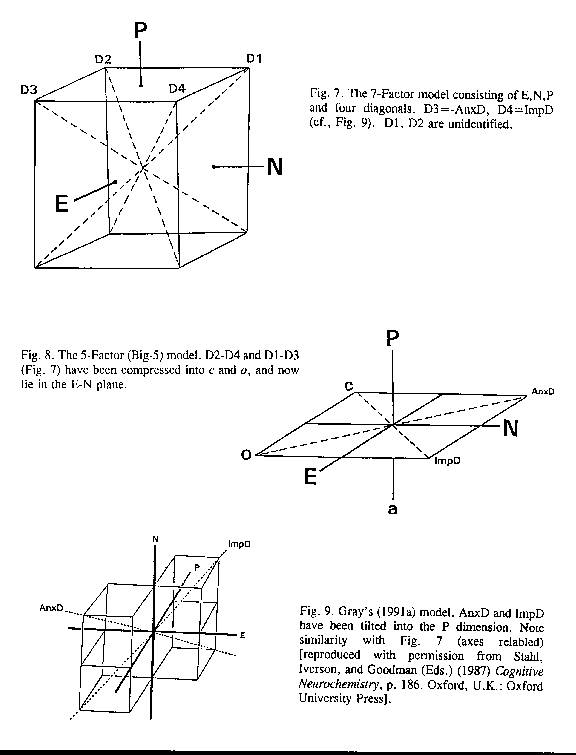
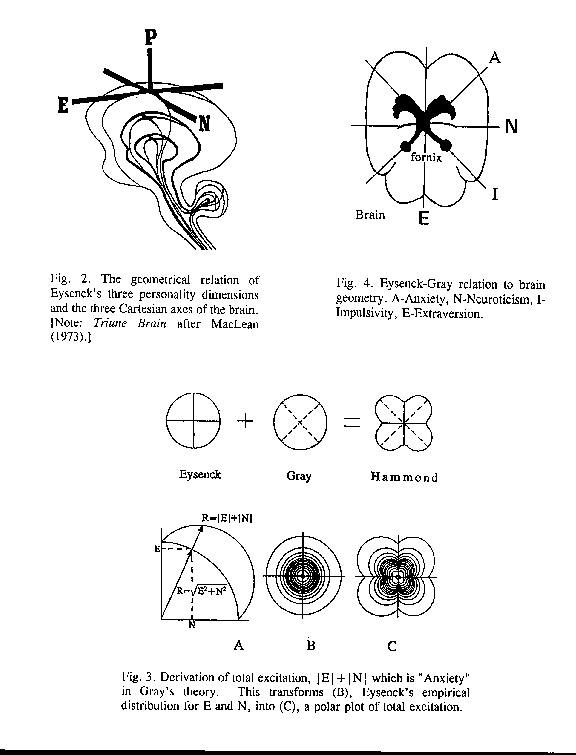
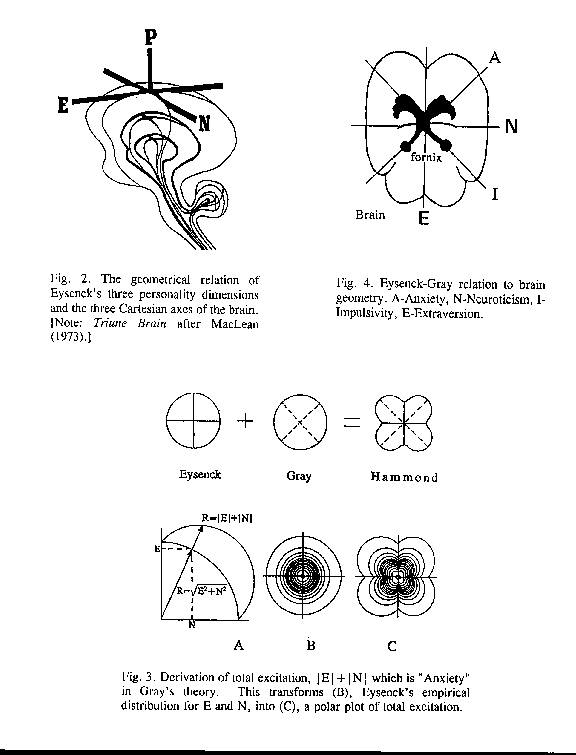
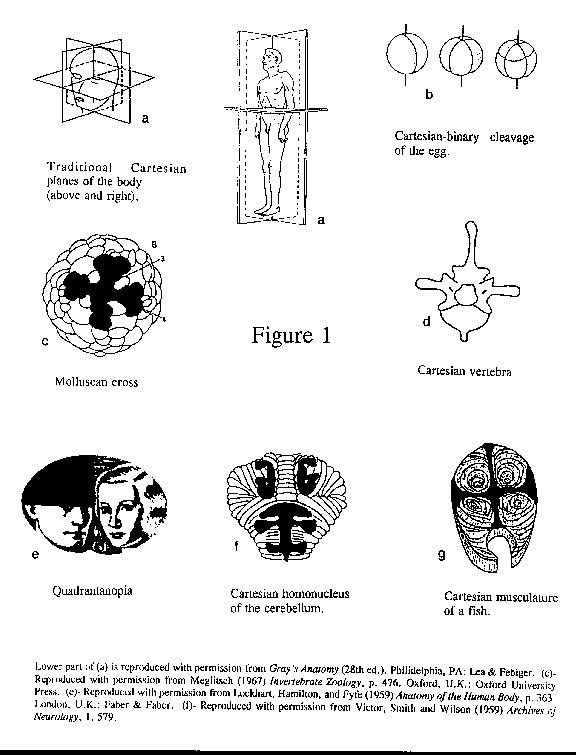
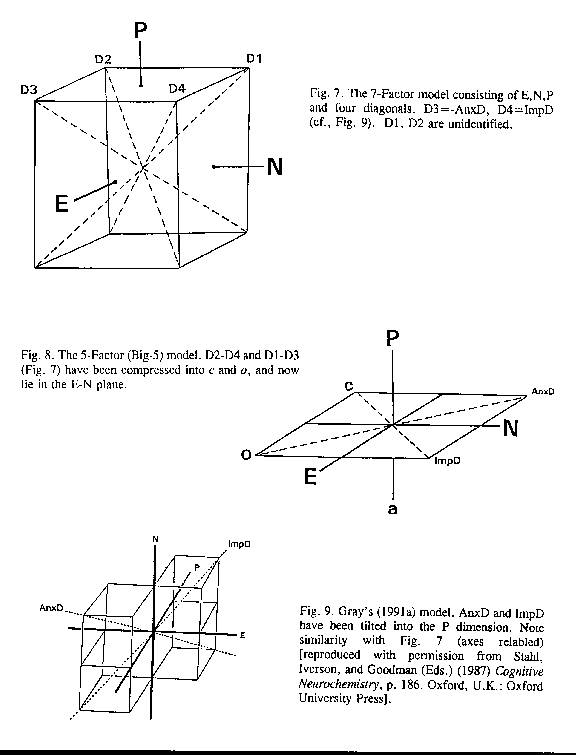
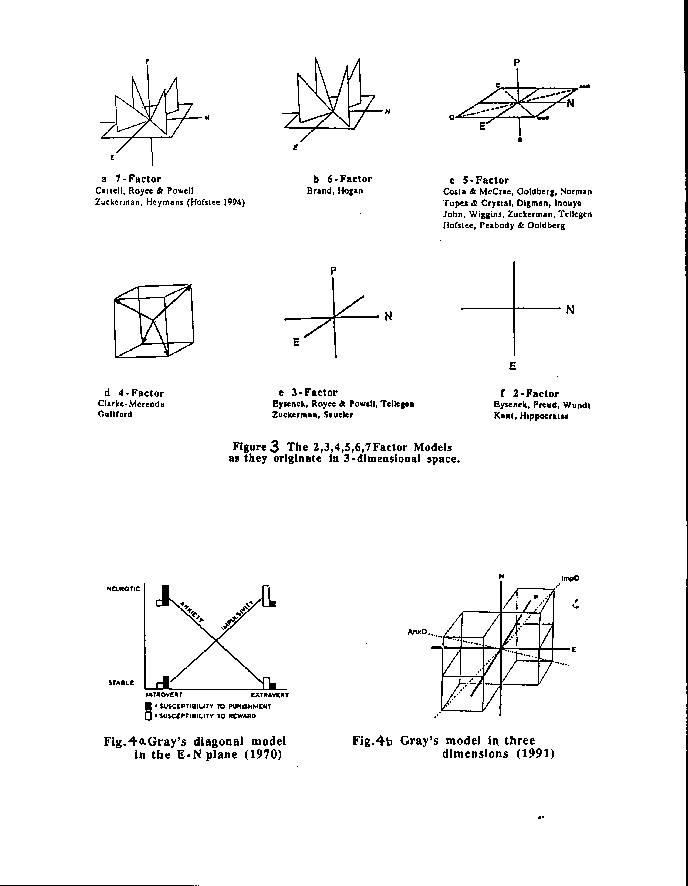
2 responses to “Human Brain, Regions, Functions”
I’d love a copy of the brain images that open this post. Where do I obtain permission to use or copies?
Thank you!
Sorry, you can use google image search to find the original article. I can’t do it at the moment.